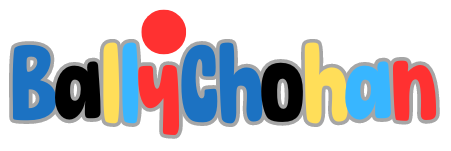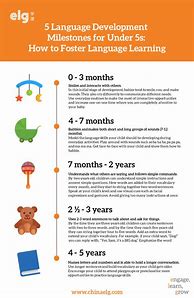Top Strategies For Promoting Language Development In Young Children
Language development is a fundamental aspect of early childhood, laying the foundation for a child’s future success in all areas of life. It encompasses the ability to understand, communicate, and think using language. Early language skills are essential for literacy, social interaction, and cognitive development. In this article, we will explore some top strategies that parents, caregivers, and educators can use to foster language development in young children.
Creating a Language-Rich Environment:
Fostering Conversation: The Power of Talk
Conversation is the bedrock of language development. Children learn by listening to and interacting with others. Engage in frequent and meaningful conversations with young children, even if it’s just about everyday activities like getting dressed or preparing meals. Ask open-ended questions, encourage them to share their thoughts and feelings, and patiently listen to their responses.
Reading Aloud: Opening Doors to Language and Literacy
Reading aloud is an exceptional way to introduce children to the world of language and literacy. Choose books with captivating stories, colorful illustrations, and diverse characters. As you read, point out the words, ask questions about the story, and encourage children to participate in the reading experience by predicting what will happen next.
Singing and Rhymes: Musicality and Language Acquisition
Music and rhyme play a vital role in language development. They help children learn about sounds, rhythm, and the structure of language. Sing songs, recite rhymes, and engage in musical activities with children. These activities help them develop phonological awareness, which is a key skill for reading.
Playing With Language: Games, Songs, and Activities
Playing is a natural way for children to learn and grow. Engage in language-based games, such as “I Spy,” “Simon Says,” or “What’s Missing?” These games help children develop vocabulary, grammar, and communication skills. Encourage imaginative play and role-playing, which allows children to practice language in a fun and engaging way.
Exposure to Multiple Languages: Expanding Linguistic Horizons
Exposing children to multiple languages early on can expand their linguistic horizons and enhance their cognitive abilities. This can be achieved through bilingual books, songs, or even by speaking a different language at home. Research has shown that multilingual children have better cognitive flexibility and problem-solving skills.
Nurturing Early Literacy Skills:
Developing Phonemic Awareness: Sounds Matter
Phonemic awareness is the ability to recognize and manipulate individual sounds in spoken words. It is a crucial skill for reading and spelling. Engage children in activities that focus on sound play, such as rhyming, blending sounds to create words, or identifying initial sounds.
Building Vocabulary: Expanding Word Knowledge
Vocabulary is the foundation of language. The more words a child knows, the better they will understand and communicate. Read books with rich vocabulary, have conversations about new words, and use picture dictionaries to introduce new words. Encourage children to use new words in their own language.
Introducing Print Concepts: The Magic of Books
Understanding how print works is an important step towards literacy. Point out the letters in books, show children how to hold a book, and explain that words on a page represent spoken language. Encourage children to “read” pictures and tell stories based on illustrations.
Encouraging Emergent Writing: From Scribbles to Sentences
Emergent writing is when children begin to experiment with writing. Provide children with a variety of writing tools, such as crayons, markers, and pencils. Encourage them to draw, scribble, and write letters. Don’t worry about perfection; the goal is to encourage exploration and creativity.
Supporting Children with Language Delays:
Early Intervention: Identifying and Addressing Challenges
Early intervention is crucial for children who are experiencing language delays. If you notice any concerns, consult with a speech-language pathologist or other professionals who specialize in early childhood development. They can assess the child’s needs and provide appropriate support.
Collaborative Approaches: Working with Families and Professionals
Working closely with families is essential for supporting children’s language development. Share information and strategies with parents and caregivers, and encourage them to continue language-rich activities at home. Collaborating with other professionals, such as teachers or therapists, can ensure a holistic approach to language development.
Utilizing Visual Supports: Making Language Concrete
Visual supports, such as pictures, symbols, or objects, can help children understand and communicate more effectively. Use these supports to supplement verbal instructions or explanations, especially for children who are non-verbal or have difficulty understanding spoken language.
Creating Inclusive Environments: Meeting Individual Needs
It is essential to create inclusive environments that meet the diverse needs of all children. Provide individualized support, use appropriate language, and create a welcoming and supportive atmosphere.
Conclusion:
Promoting language development in young children is a crucial investment in their future. By creating language-rich environments, nurturing early literacy skills, and providing support for children facing challenges, we can empower them to become confident communicators and lifelong learners. Early intervention and ongoing support are key to unlocking the potential of every child.
FAQ
Q: What are some signs of language delays in young children?
A: Some signs of language delays include:
- Not babbling by 12 months
- Not using single words by 18 months
- Not using two-word phrases by 24 months
- Difficulty understanding simple instructions
- Limited vocabulary
Q: How can parents and caregivers create a language-rich environment at home?
A: Here are some tips:
- Talk to your child frequently, even if it’s just about everyday activities.
- Read aloud to your child every day.
- Sing songs and recite rhymes.
- Engage in language-based games and activities.
- Limit screen time and encourage play.
Q: What are some strategies for supporting children with language delays?
A: Here are some strategies:
- Consult with a speech-language pathologist or other professionals.
- Provide individualized support and therapies.
- Use visual supports to supplement verbal communication.
- Create inclusive environments that meet the needs of all children.
Q: How can educators promote language development in the classroom?
A: Educators can promote language development by:
- Creating a language-rich classroom environment.
- Using a variety of teaching methods.
- Providing opportunities for students to interact with one another.
- Supporting students with language delays.
Q: What are some resources for parents and educators who want to learn more about language development?
A: Here are some helpful resources:
- The National Institute on Deafness and Other Communication Disorders (NIDCD): https://www.nidcd.nih.gov/
- The American Speech-Language-Hearing Association (ASHA): https://www.asha.org/
- The International Dyslexia Association (IDA): https://dyslexiaida.org/
Language development is a lifelong journey. By nurturing language skills in early childhood, we can lay the foundation for a child’s future success.

